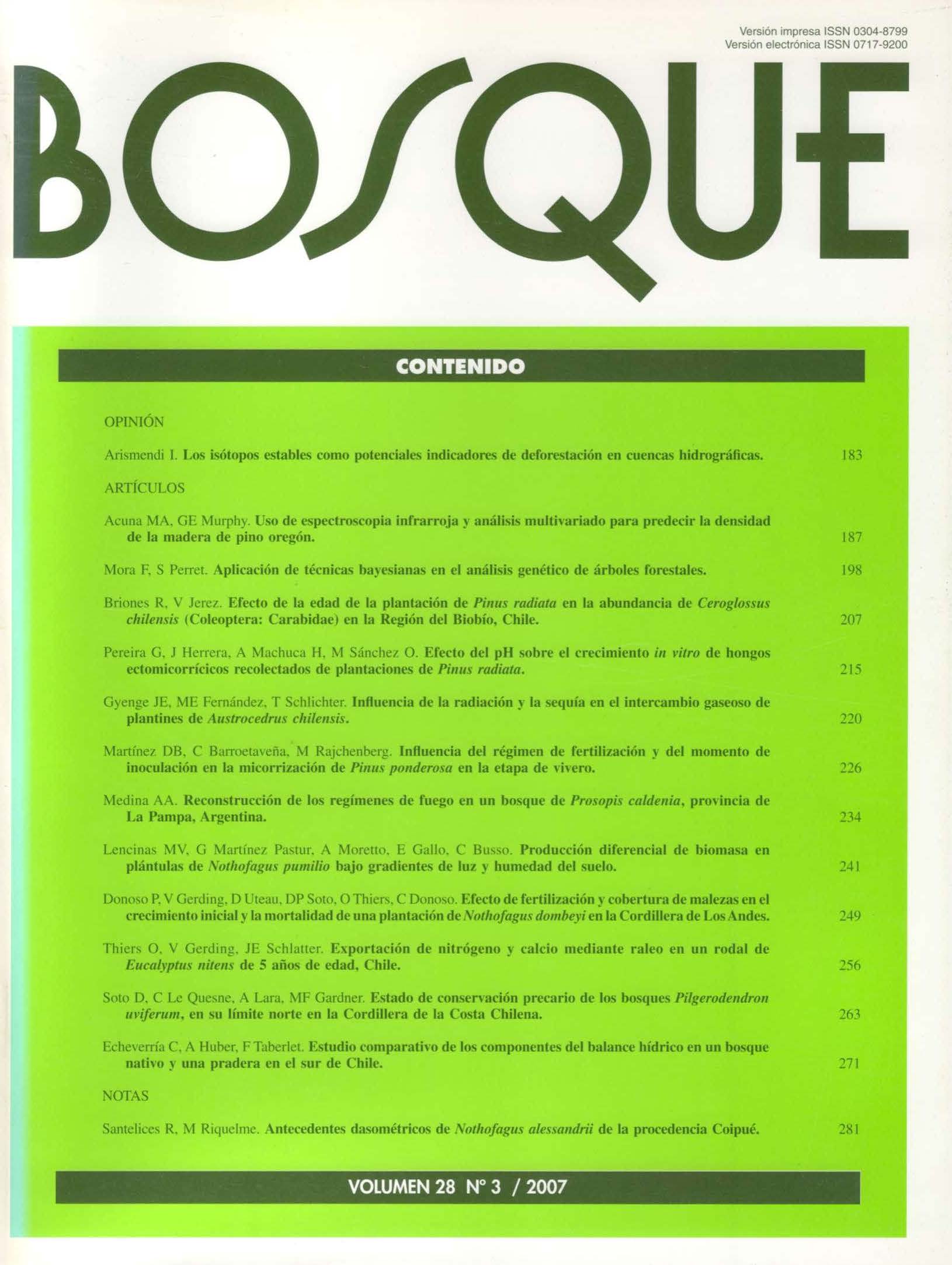Applications of bayesian techniques in forest tree breeding
Main Article Content
Abstract
This study was undertaken to investigate bayesian methods to scientific inference in forest tree breeding. The Independence Chain (IC) and Gibbs sampling (GS) algorithms were applied on data sets from a field trial of Eucalyptus cladocalyx aiming to predict random family and additive genetic effects, respectively. The trial was carried out in the coastal area of Coquimbo Region, northern Chile. Diameter and height growth rate (TCD and TCA) were the data sets collected in a period of 30 months. Bayesian procedures were compared with the ranking obtained by Best Linear Unbiased Prediction (BLUP). BLUP and IC had similar family ranking, although the family selection based on credible intervals of the genotypic effects (bayesian framework) was clearly more intensive. Spearman rank correlation coefficients were high and significant (Gæß = 0.99) between BLUP and GS. The estimates of heritability were moderate: h2 = 0.42 (TCA) and h2 = 0.43 (TCD). The traits had a significant correlation (Gæß = 0.7). The estimated genetic gains, in relation to the experimental average, ranged from 17% to 28%. The greatest genetic gain and genetic diversity of the original diversity of the experimental populations may be achieved and maintained if the trees are selected for TCD. It was conclude hat the bayesian inference may be a useful tool in the genetic evaluation of forest trees, since it incorporates the variability of the genetic parameters by using posterior distributions.

